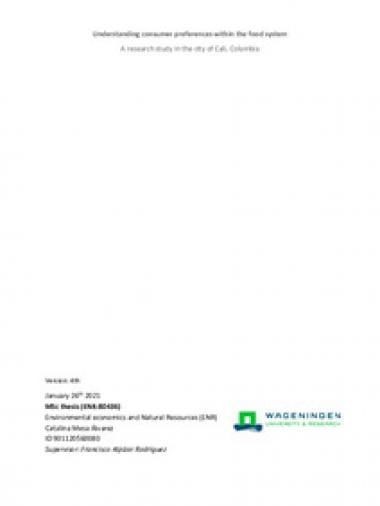Understanding consumer preferences within the food system: A research study in the city of Cali, Colombia

Following the Food and Agriculture Organization of the United Nations (FAO) definition of a food system, this encompasses all the stages of keeping the human population fed. At a global level, the food system is responsible for around 19-29% of the world’s GHG emissions, and is the major cause of deforestation. It also accounts for 20% of energy consumption and it is the biggest consumer of freshwater, using 70% of available resources. This complex system covers multiple stakeholders, both from the supply and demand side. This study focuses on the demand side and the aim is to understand the consumer preferences when choosing food with varying environmental, social and health attributes by using Discrete Choice Experiments (DCE). Consumers value environmental, health and social attributes related with food differently. Agrochemicals (with an impact on both the health of the environment and the human population) along with environmental factors such as deforestation level are the most important attributes when choosing food products. Human health factors are also part of the preferences of consumers but in a less importance. (Non) Social demographic factors do have an effect on the consumers ‘interests and therefore in their MWTP for a more sustainable diet.
Citation
Mesa Alvarez C. 2021. Understanding consumer preferences within the food system: A research study in the city of Cali, Colombia.(MSc Thesis Environmental economics and Natural Resources) Wageningen University and Research Center.